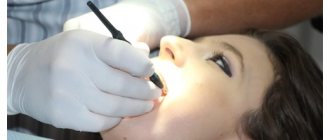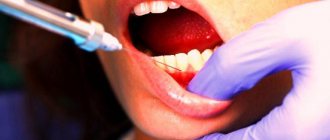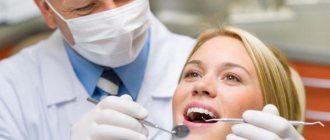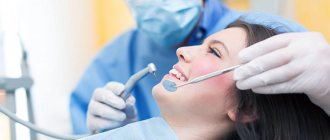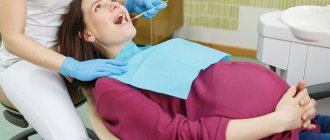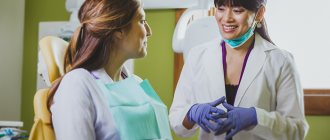Expecting a baby is one of the most wonderful periods in a woman’s life. Her thoughts are focused on dreams of the future baby and joyful worries about children's things, a stroller, and toys. But changes in the body sometimes prepare unpleasant surprises for the expectant mother. Thus, many women feel dryness, itching and burning in the intimate area during pregnancy. What caused them?
What should an effective disinfectant contain?
Today there are two types of antiseptics that work well against germs, bacteria, and viruses.
The first type is alcohol-based liquids; it should contain at least 60%, preferably more. If the content is less, then the protein shell of microbes and viruses will not be destroyed and some of them will remain invulnerable. The alcohol must be ethyl or isopropyl.
The second type of antiseptic is based on chlorhexidine. It does not erode longer, provides longer-lasting protection, but damages the skin of your hands. However, alcohol also dries the skin, so such liquids usually contain softeners.
Side effects
With long-term use of Chlorhexidine during pregnancy, there is a risk of developing negative manifestations:
- Temporary occurrence of enamel discolorations.
- Impaired taste perception due to the bitter taste of the drug.
- Dermatological reactions.
- Vaginal itching.
- The appearance of the symptom of “sticky palms”.
Cases of Chlorhexidine overdose do not occur in clinical practice, however, the solution should be used with caution by pregnant women who are hypersensitive to the active component due to the possible development of allergies.
How to protect the skin of your hands after using an antiseptic?
High-quality formulations already include various softeners, moisturizers, glycerin, and vitamins that reduce the effect of alcohol and chlorhexidine on the skin. However, sometimes this is not enough, especially with frequent use of solutions. To prevent irritation, redness, and allergic reactions, do not use too hot water for washing, use cream soap instead of regular soap, drink more water (7-8 glasses a day). If cracks and wounds appear, buy special ointments, do not delay treatment.
Indications and contraindications
The medication is often prescribed for various gynecological diseases:
- vulvovaginitis caused by microbes sensitive to the drug;
- for STIs, such as gonorrhea, syphilis, trichomoniasis, mycoplasmosis, genital herpes;
Chlorhexidine is also used in pre- and postpartum vaginal treatment, when treating the hands of medical workers before obstetric examination.
Chlorhexidine digluconate is often prescribed during pregnancy to rinse the mouth for dental problems:
- For diseases of the oral mucosa, including stomatitis of various etiologies, herpes, erosion, and candidiasis.
- In pathological processes affecting the gums - periodontal disease, gingivitis of pregnant women, periodontitis. Used in complex treatment.
- As prescribed by a dental surgeon after tooth extraction and other dental surgical interventions.
Chlorhexidine is widely used in the treatment of:
- tonsillitis;
- pharyngitis;
- laryngitis;
- tonsillitis.
The therapeutic effectiveness of eliminating these pathologies is achieved only with an integrated approach to the treatment of throat diseases, so it is important to adhere to the doctor’s recommendations. Carrying out inhalations or rinsing with Chlorhexidine without taking other medications may not lead to recovery, and sometimes even worsen the patient’s condition.
The solution has high activity against microorganisms, so Chlorhexidine can be used during pregnancy to treat many infectious diseases.
Contraindications:
- Individual intolerance.
- Dermatitis in various manifestations, since the drug can lead to aggravation of the disease.
- Doctors do not recommend using the drug simultaneously with other antiseptics.
- Chlorhexedine should not be used simultaneously with alkaline solutions and soap, as they neutralize its effect.
- Use with iodine-containing drugs is unacceptable due to their incompatibility.
Is it possible to drink antiseptic?
No you can not. Unfortunately, some people use antiseptics internally due to the presence of alcohol in the composition. The result of such use is burnt internal organs, severe poisoning, and this is at best; at worst, the person dies. For the production of antiseptics, two types of alcohol are used - ethanol and isopropyl. The second is cheaper, is not suitable for the production of alcohol-containing drinks due to toxicity and is not suitable for drinking, but due to its low price it is most often used in the manufacture of sanitizers.
Instructions
Before you start using Chlorhexidine, you must carefully read the instructions, especially the section on use during pregnancy.
The annotation for the medication states that treatment with this drug while the baby is waiting is allowed only in situations where the risk to the mother exceeds the possible risk to the child.
Do not be afraid of such words, because this is a standard phrase warning that you need to consult a doctor regarding the advisability of using Chlorhexidine, and not self-medicate.
In addition, not a single drug is tested on pregnant women, so it is impossible to say with complete confidence about the absolute safety of the substance.
The most common liquid form of the drug, however, there are vaginal suppositories containing the substance chlorhexidine, which can be used during pregnancy to treat gynecological infectious and inflammatory diseases.
Instructions for use of Chlorhexidine:
- Oral baths for diseases of the oral cavity . Place 20 ml of Chlorhexidine in your mouth and hold for 30-60 seconds, then spit out the solution and do not rinse your mouth with water. It is important to observe the time the liquid remains in the mouth so that a protective membrane on the mucous membrane has time to form.
- Throat treatment . Before the procedure, rinse the oropharynx with water. Take a ready-made 0.05% solution of Chlorhexidine, do not dilute it with water, take a tablespoon of liquid and gargle thoroughly for a minute. After the manipulation, it is not recommended to eat for about an hour.
- Vaginal douching . To perform the hygienic procedure, a woman needs to sit in a bathtub or on a couch, insert the tip of the bottle into the vagina and irrigate it, and then try to hold the solution for several minutes.
Can alcohol be used as an antiseptic?
In its pure form, we do not recommend using alcohol as an antiseptic. In sanitizers, the amount of ethyl ranges from 60 to 80%; they are no longer used. The alcohol strength is 96%, meaning this concentration will almost certainly cause skin problems, especially with repeated use. In addition, even the simplest sanitizer contains auxiliary substances - glycerin, hydrogen peroxide and others. They not only perform antiviral functions, but also serve as softeners, humidifiers, etc. Thus, using alcohol carries the risk of burns, irritation, and other problems.
By the way, you cannot use vodka either, it is ineffective, since its strength is only 40%, which will not kill viruses.
Can Chlorhexidine be used during pregnancy?
The drug does not have a negative effect on the female body, and also does not penetrate the hematoplacental barrier, so the drug does not reach the baby. Therefore, the answer to the question whether it is possible to gargle with Chlorhexidine during pregnancy is obvious. Also, the substance does not pose a threat to the development of the embryo when used in the first trimester of gestation.
In addition to use for throat diseases, you can rinse the mouth with Chlorhexidine during pregnancy, and also use it for antiseptic treatment of the external genitalia.
Baths with Chlorhexidine: how to do it in gynecology?
And in conclusion, we will talk about another method of using Chlorhexidine in gynecology - baths. This is a medical procedure that is performed exclusively by a doctor.
- Before the procedure, it is necessary to empty the intestines and bladder, and also wash yourself without soap with Chlorhexidine;
- Next, the patient lies down on the gynecological chair, and the doctor inserts a gynecological speculum;
- The doctor removes all the mucus and only after that introduces a solution with which the patient rests for 10-15 minutes;
- The doctor monitors the patient’s condition, and after 15 minutes, removing the speculum, helps clean the vagina of excess fluid into a previously prepared container.
What you need for the rinsing procedure
To rinse your nose correctly, you need to prepare certain devices. Everything you need is freely available on pharmacy counters.
For processing, you will need a syringe without a needle (5 ml is enough) or a syringe bulb (no more than 50 ml). It is convenient to use Chlorhexidine solution with a special “neti pot” washing device made of ceramic or plastic. The choice of equipment depends on preference.
Chlorhexidine is collected in a container and rinsing begins. It is advisable to do this in the bathroom, or above the basin. The person leans forward 45 degrees, his head is turned slightly to the side. Mouth breathing is smooth and constant. The contents of the container are slowly poured into one nostril. With the correct position of the body, the liquid will pass through the nasal passage and pour out through the second nostril or mouth. There should be no discomfort, burning or itching. Daily rinsing of the sinuses helps to quickly get rid of the infection. Eliminates runny nose, improves overall health.
—>
Pediatricians do not recommend clearing the nose of infants with antiseptic. Young children have narrow airways. Under high pressure, Chlorhexidine can get into the child’s ears, thereby triggering the development of otitis media. In this case, self-medication is completely contraindicated. Any actions must be agreed with the attending physician, and therapy is carried out only under the supervision of a specialist.
- How to gargle with Chlorhexidine for adults, children and pregnant women?
Children over 6 years old wash their noses like adults. To prepare the child physically and psychologically, doctors recommend that parents show the procedure by example.
Douching with Chlorhexidine in gynecology: how to do it, what helps?
In this section, we will consider the most discussed topic in recent years - the need for douching, and in particular douching with Chlorhexidine in gynecology. So, let's start with the fact that a woman's vagina is a self-cleaning organ, and at times when a woman is healthy, douching can cause harm rather than benefit, as it will wash away natural lubrication and beneficial microflora.
It’s a different matter if you have the following diseases:
- Thrush (candida);
- Nonspecific cervicitis;
- Chlamydia;
- Herpes;
- Vaginitis;
- Vulvovaginitis.
Also, douching can be prescribed by a doctor after surgery, abortion, miscarriage, as well as some other inflammatory processes.
Douching is done with a solution of Chlorhexidine 0.05%. Pharmacies sell both a ready-made solution, and you can dilute it yourself with distilled or boiled water.
So, the process of douching with Chlorhexidine:
- Prepare a solution of Chlorhexidine at room or warm temperature (can be diluted with warm water);
- Wash the genitals with warm water without soap (Chlorhexidine reacts with soap and its effect is canceled);
- Wash with Chlorhexidine solution (lips, around them, as well as the entrance to the vagina);
- Lie horizontally, and using a special cup with a spout, or a bulb, or a syringe without a needle, inject the Chlorhexidine solution into the vagina;
- Remove the device and squeeze the vaginal muscles, pushing the solution inside;
- Leave for 15 minutes and take a vertical position so that the excess solution pours out;
- Dry your body with a towel and put on clean, steamed or ironed underwear;
- Do not pee for 2 hours (therefore, it is recommended to douche at night).
Gynecological douche
Hygiene after childbirth
It is generally accepted that the postpartum period lasts about 6-8 weeks, until all organs and systems of the body return to their previous state. After childbirth, a woman is very vulnerable to infections, because the cervix remains open for a long time, and the internal genital organs sometimes appear as one large wound.
The baby, in turn, is also very vulnerable to infections at first. In order to avoid various kinds of complications, it is very important for mom to follow the rules of intimate hygiene.
General recommendations:
- wash your hands often, they should always be clean;
- instead of washing your hands with soap, use sterilliums more often - antiseptic gels or balms (unlike soap, they actually destroy 99% of bacteria, and good sterilliums also maintain the Ph factor of the skin);
- take a shower at least twice a day;
- change your shirt every day to a clean one;
- towels for hands, mammary glands and intimate hygiene must be strictly individual, washed at 90 degrees and ironed with a hot iron on both sides;
- go to the toilet every 3-4 hours, even if you don’t feel the urge (sensation after childbirth may be temporarily absent, and signals to the brain about the fullness of the bladder or rectum may not be received);
wash yourself after each toilet (do it with a clean hand, from front to back);- After washing, the skin of the perineum should be dried by blotting a clean towel or diaper;
- do not take a bath or visit the sauna in the first 2-3 weeks after birth;
- in case of exacerbation of hemorrhoids after childbirth, you should not use toilet paper after visiting the toilet, it is better to simply wash yourself with lukewarm water;
- if you received stitches after childbirth, try not to touch them with your hands at first, and when washing, simply direct a weak stream of water to the area of the stitches; also be sure to undergo antiseptic procedures for stitches;
- Do not douche under any circumstances during the postpartum period without a doctor’s recommendation, as this may cause a decrease in local protection and increase the likelihood of infection.
Lingerie
The following basic requirements apply to underwear during the postpartum period:
it should allow air to pass through well (preferably it should be made of natural fabrics, not synthetics); do not adhere too tightly to the skin, especially the genital organs, and do not create a “greenhouse effect”, do not injure, especially the seams; underwear should be comfortable and not restrict movement.
There are now disposable underwear on sale that are specially designed for use during the postpartum period. Most often, maternity hospitals are prohibited from bringing your own underwear - only disposable underwear is allowed.
Linen change frequency:
- the shirt must be changed daily;
- We change panties once a day or even more often;
- bra at least once every 3-5 days;
- change bra pads as they get wet so you don’t have to change your bra every day;
- It is better to change bed linen at least once a week or use special disposable linen for the postpartum period;
- The diaper, which is laid on top of the sheet in the maternity hospital, is changed daily.
Sanitary napkin
If the use of pads is allowed in the maternity hospital (some maternity hospitals do not allow the use of pads in the first days after birth, but only loose underwear to hold the diaper in place), use highly absorbent pads or buy special postpartum pads. They should be changed as they become saturated with secretions, at least once every 4 hours. Ideally after every visit to the toilet. It is especially important to follow this rule in the first days after childbirth, while lochia comes out (they are a very good breeding ground for bacteria). If pads are not allowed in the maternity hospital, then, apparently, you will be given special diapers. This is done so that the doctor can easily determine the condition of the woman in labor by the nature of the discharge.
Intimate hygiene products
The following basic requirements apply to intimate hygiene products during the postpartum period:
- good skin cleansing, without irritation;
- absence of allergic reactions;
- antibacterial and anti-inflammatory protection;
- neutral PH factor.
Baby soap or soap with an antibacterial effect may be perfect for these purposes. Special products for intimate hygiene are also suitable. It is better to check their effects on the skin before giving birth to prevent an allergic reaction to them.
Important! Do not use household soaps for intimate hygiene.
Breast care
It is not at all necessary to wash your breasts too often, maximum 1-2 times a day, otherwise the protective layer of the nipples will suffer greatly and they will crack. Wash your breasts with your hands without washcloths or sponges.
Before and after feeding, express a few drops of milk, this is a good prevention of cracked nipples. After lubricating the nipple with milk after feeding, let it dry a little in the open air. In addition, for cracks in the delicate skin of the nipples, use creams that your doctor recommends.
Mother’s hygiene procedures during and after childbirth occupy a significant part of the day. The child’s hygiene procedures are even more important. But these are necessary conditions for raising a healthy and strong baby. Therefore, be prepared for this and do not neglect them.
Chlorhexidine - what is it and how does it work?
When considering Chlorhexidine in gynecology, women should understand what kind of drug it is and how to work with it. So, Chlorhexidine is the most popular antiseptic today, which, upon contact with the skin and mucous membranes, envelops them and destroys the membrane membranes of bacteria located on them. At the same time, in a diluted state, it is not able to destroy bacteria, but is able to inhibit the proliferation of bacteria and microorganisms.
The effect of Chlorhexidine is up to 4 hours.
